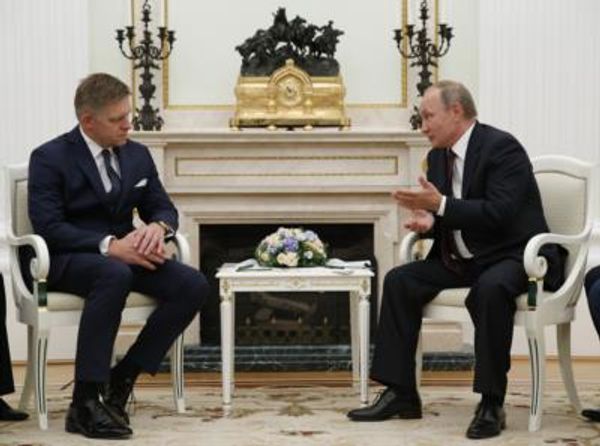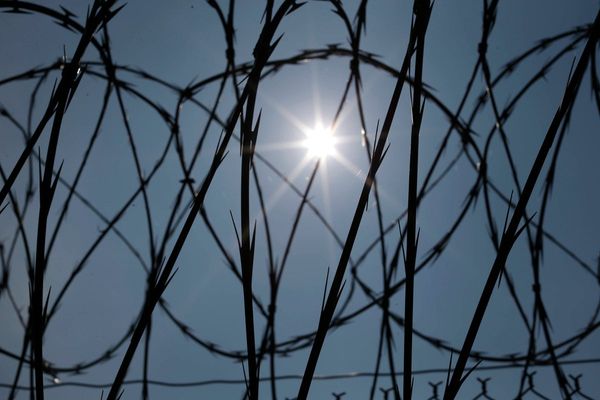
It’s a 10-day turnaround to fix a loose plug or a dead wire in a remote community — it requires a helicopter and a team of city-based experts to fly in, plug in, and fly out.
“Whether it’s a TV dish that needs realignment, set-top boxes that are sitting on the floor filled with dust and water, wi-fi that’s shut off because it’s got the wrong card in, these are all minor problems that you don’t need fully fledged interstate technicians for a fix and make safe, fly-in fly-out service,” CEO of the Centre for Appropriate Technology (CfAT) Peter Renehan tells Crikey during a visit to its head office at the Alice Springs Desert Knowledge Precinct.
“We want to gear up our guys to go in and be on-ground tech support and then teach these remote communities to do it themselves. We want those skill sets to remain in the community.”
Renehan, a Central Arrernte man, has been at the helm of the 40-plus-year-old science and technology hub CfAT (formerly CAT) for three years. The organisation is Aboriginal and Torres Strait Islander controlled and comes with a longstanding remit to “research, design, develop and teach” bush-specific technology.
From toilets that keep out flies, to dustproof washing machines, roving wi-fi hotspots, and real time earth observation through an international satellite program run on site, Renehan’s aim is to reinstate confidence in Indigenous peoples that their past is part and parcel of Australia’s scientific and technological future.
“There’s a tech and science to being Aboriginal,” he says. “You can’t have been here for 60,000 years without interacting, immersing yourself and understanding science and tech. What I’m trying to do is make Aboriginal people realise that system still sustains us now and we can find a way to be a part of that.”
While the city edition of “cutting edge” technology goes by gigahertz, gigabytes, and RAM — speed, size, and storage — Renehan says the bush (and Aboriginal world) tap into knowledge systems and resources with metrics that revolve around people, place and culture. Be it the “plying, heating, cooling” process of binding wood and steel using the sinew from kangaroo limbs and spinifex wax or aerial mapping done from the land using the stars, CfAT attempts to reverse the rhetoric of the city as the knowledge hub and the bush as leagues behind to show that there’s a sophisticated slowness to science and technology.
These same principles extend to its staff. As CEO, Renehan has little interest in quick returns, lofty targets, and good-looking numbers that “don’t have any outcomes for Aboriginal people”. Real results, he says, require time (16 years for him) and an Aboriginal understanding of leadership. He explains that in Indigenous culture, elders identify young leaders and subtly guide them into a leadership role without them knowing. It’s how he landed the position of CEO three years back and how he plans to find his replacement. In short, Renehan wants to do himself out of a job.
“None of these guys will probably want that responsibility,” he says. “Most of us nominated as leaders don’t. I certainly didn’t want to be a CEO. But these older people, they see something in you that you don’t.”
Leader or no, CfAT’s remit is to help Indigenous workers find their personal groove and run with it. For maintenance worker William Quall, a first port of call has been learning how to manage nervous energy.
“One time I went up the cherry-picker and I was scared,” he tells Crikey at CfAT headquarters. “I’m a big boy, but I’d seen the other boys up there and it looked fun so I wanted to give it a try. I got up there and came straight back down.
“But you’ve got to try something different in life. Whatever comes your way, you just got to take it. You only get one chance.”

Quall is a 25-year-old Amoonguna man and the youngest member of the CfAT maintenance team. He’s been working there for three years and in that time asset and maintenance manager David Stuart says he’s fast become a leader in the team and in his community.
“These fellas don’t realise how many eyes they have on them. I see little kids looking up to Will. They really are role models in their community,” Stuart, a Central Arrernte man, says.
The maintenance team is made up of six Indigenous men, with Stuart at the helm. The numbers have fluctuated over the past two years — with men moving on to other jobs or returning to community to fulfil family obligations — but the group of six are what the management team described as “really stable”.
For 32 year-old Amoonguna man Christopher Mills, long-term work “in the one place” has been a gamechanger: “I like getting to know these fellas, doing training, working in this environment. We look after this whole place. The animals, the birds. I go fill up their water. It’s very calming out here. And I take it home. I’m happier back home. I keep it all in mind so I can remember everything and teach others what I learn.”
Mills is one of the maintenance men working in CfAT’s “test and tag” program. Using a “small box” machine, he puts all manner of appliances — from a fridge to a toaster — through a safety test. If it passes, he tags the cords, if not, he cuts it. His name is attached to the safety tests, so it’s on him if anything goes wrong.

Renehan has ambitions to scale up the test and tag program to build a team of technicians he can deploy into community for maintenance and support. That’s phase one. Phase two is to teach communities how to do it themselves so that CfAT staff don’t mirror the current set-up of fly-in fly-out resources.
The learn-teach partnership is part and parcel of work at CfAT, with Renehan telling Crikey that with mentors in the mix, the result of retention grows exponentially. It’s a process of knowledge sharing and gradually bolstering skills, capacity and overwhelmingly confidence.
On the grounds at CfAT, the knowledge exchange ranges from plumbing to welding to removing lizards out of harm’s way of lawnmower blades. Quall says: “For the big lizards, I grab them by the tail and remove them. I’m used to it. As a kid I’d go hunting and that’s how I’d pull them out. I show the other boys how to do that.”
He chuckles telling me that many of the snakes are not so lucky, with baby browns galore falling victim to the lawn mower blades. Day one there were 15: “The snakes here are so bad. I even jumped on top of the car and there was another snake up there.”
Quall speaks to Crikey confidently in English, but on the job he says he jumps between English and his first language, Arrernte, because “some of the fellas are a bit too shy to speak English”. He says it’s good for him to help others and teach them something of his own.
The jobs at CfAT range from buffel grass spraying, chemical training, servicing antennae, rerunning cables, fixing broken things, greasing the satellite dish, operating the cherry picker, using a forklift, making fire breaks, leaf blowing and mowing the grounds (to name but a few). A driver’s licence is on the cards for some of the team, which would expand their tool kits even further.
Renehan is clear: CfAT’s business model is skills, stability and sustainability of staff. With that, the dollars will start to roll in: “Rather than funding us, we need two years’ worth of projects for these guys to keep them engaged. The more work we pick up, the more stability we have for our crew, the more sustainable the program, and the more guys we can bring in.”
CfAT used to be a team of 130 courtesy of federal funding, but it’s since scaled back to 20-25 after that was all cut. It’s in the process of building back on its own “more sustainable” terms through two subsidiary organisations — regional Australia technical consultancy firm Ekistica and Australia’s first and only Aboriginal-owned and -operated ground segment service provider, CfAT Satellite Enterprises.
Although the federal government has committed $50 million for community and regional infrastructure and $10 million for digital connectivity in its May budget, Renehan says there’s no appetite to put money towards establishing a local workforce to service it. The result is infrastructure fast becomes “decrepit and in ruin”. It’s happened before and Renehan is confident that as long as companies are beholden to outcomes-based, short-term KPI-heavy metrics, it’ll happen again.
That’s why CfAT’s model is staff first, business second. From the Alice Springs grounds, Stuart says the men are helping with CfAT’s public profile through their behaviour outside work. He tells Crikey that Amoonguna man Charles Burdett borrowed the work whipper-snipper to clean up the grass back in community.

“I get encouragement. People say, ‘It’s good what you’re doing, keep it up.’ Especially my grandma. She says, ‘Get to work.’ ”
Burdett says he quickly clocked a long list of clients with his out-of hours-community service: “They saw me with the whipper-snipper and they said, ‘Can you cut my grass?’ I did.”







